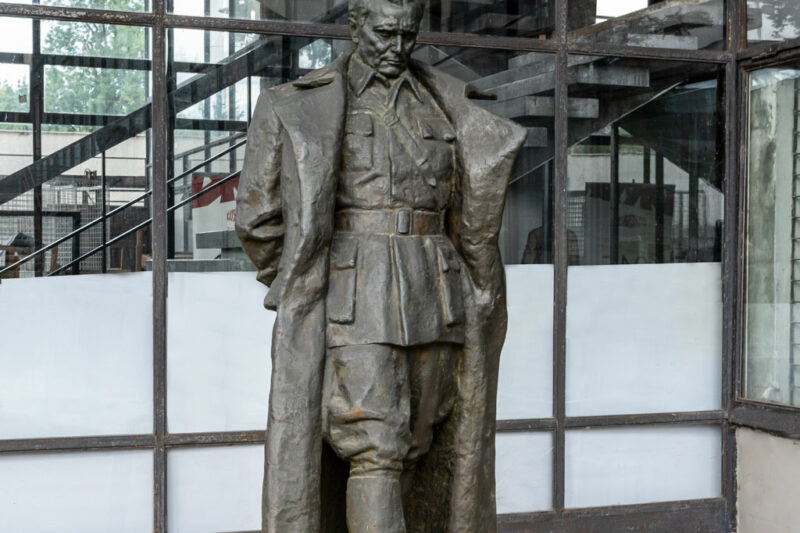The inner courtyard of the Historical Museum of Bosnia and Herzegovina is open to all visitors. In the courtyard, you can take a break during your visit and view some of the museum’s exhibits in an outdoor setting. The garden is connected to Café Tito and the main pedestrian zone in the city, Wilson’s Promenade. Each object in the garden tells the history of Bosnia and Herzegovina, as well as the museum’s past. Objects from World War II are the most numerous, with the standout being the skeleton of the DFS 230 glider. This type of glider was among the first models used in actual combat. It was a conventional glider with straight and high-set wings at a 90° angle to the fuselage. It was developed in 1932 and could carry, in addition to the pilot, 10 soldiers in full combat gear or 1250 kg of cargo. This type of glider was used in the Drvar operation, an attempted assassination or capture of the supreme commander of the People’s Liberation Army of Yugoslavia (NOVJ), Josip Broz Tito. Additionally, there is a sculpture of Josip Broz Tito in the garden, created by Antun Augustinčić. The garden bears visible traces of the siege of Sarajevo, with damages transformed into white stars (artwork “Star City,” by Edo Vejselović). The museum garden has hosted numerous events, including exhibitions, concerts, receptions/gatherings, book launches, and outdoor film screenings.
History under the Open Sky

09
May
